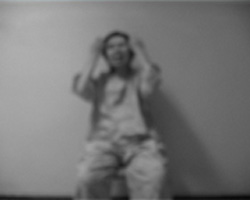

 An artist who developed an international reputation by way of her interactions with corpses of the recently deceased, Araya Rasdjarmrearnsook tends to present herself as a poet first and foremost. Her work seeks to illuminate an area of culture that is very little understood even by those who present themselves as experts in it, and by way of her insistence that there is a much stronger bond between the living and the dead than our death-phobic culture permits, Araya manages to also make a fundamental point about some of the hidden responsibilities that come along with being alive. We will all be dead soon enough, her art seems to argue, and by letting ourselves operate comfortably within that gap of meaning, we may even be pave the way for a very pragmatic bit of spiritual housecleaning.
An artist who developed an international reputation by way of her interactions with corpses of the recently deceased, Araya Rasdjarmrearnsook tends to present herself as a poet first and foremost. Her work seeks to illuminate an area of culture that is very little understood even by those who present themselves as experts in it, and by way of her insistence that there is a much stronger bond between the living and the dead than our death-phobic culture permits, Araya manages to also make a fundamental point about some of the hidden responsibilities that come along with being alive. We will all be dead soon enough, her art seems to argue, and by letting ourselves operate comfortably within that gap of meaning, we may even be pave the way for a very pragmatic bit of spiritual housecleaning.
Because her art is rooted in the universal need to console ourselves through the possibility of communion with another person’s soul, Araya is equally drawn to situations in which this communication appears to be thwarted, or where the information conveyed is delivered in a less than intelligible way. We know that the cadavers in her best-known works do not ‘understand’ her as she reads them poems relaying the joys of the living senses, but this seems far less important than the fact that we, her living audience, can understand her perfectly well, and it is no exaggeration to say that we are really her intended audience.
The five-channel work that Araya is presenting in Taipei, Storytellers of the Village, ventures into an area of interpersonal communication that once again calls into question whom among us is doing the signifiying and who is merely present. Edited together from a long series of taped interviews with clinically insane women, Aray’s video interlocutors babble on in an unbroken stream of reverie, suspicion, befuddlement and, at times, complete incoherence. For the artist, this balance between the apparent subject of the conversation and the primordial urge to engage in the effort of speech (even when there is no one to listen) reveals more about our own ‘normalcy’ than it does about mental illness. As with the dead, Aray’s larger point seems to be that we see these women as foreign only at our own ethical peril, for we are never more human than when we try to communicate with another, and fail in the effort.